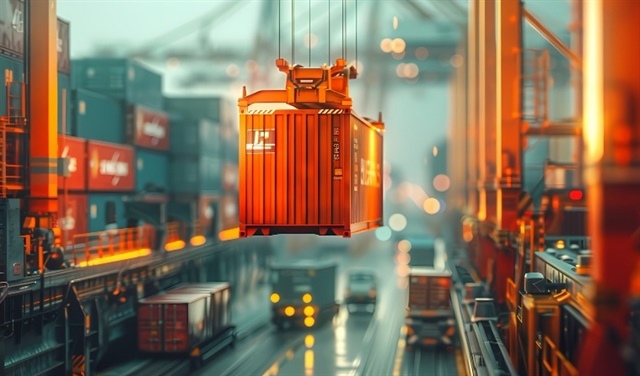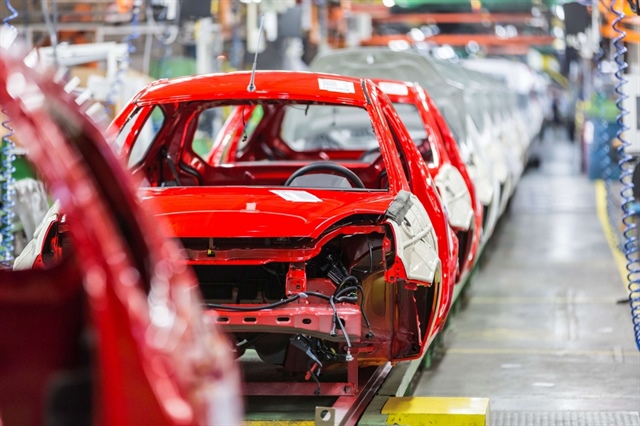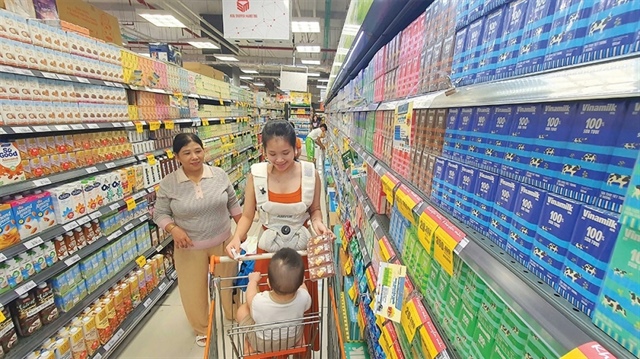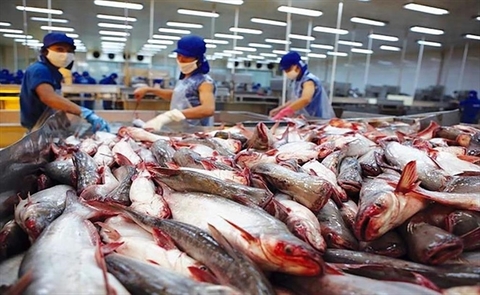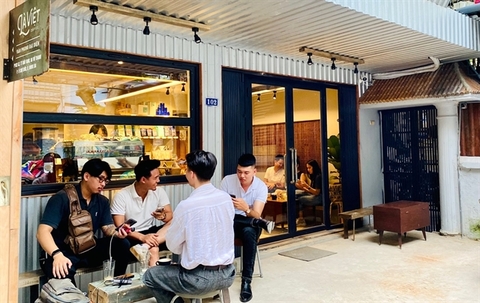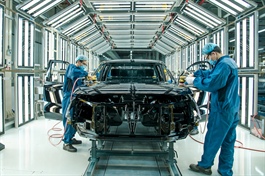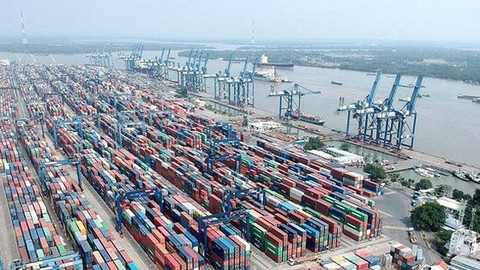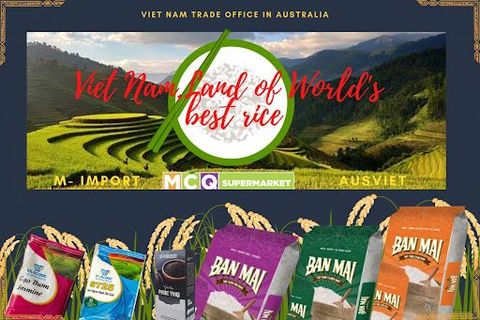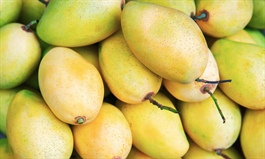Instant noodles and HCMC's migrants-based economy
Instant noodles and HCMC's migrants-based economy
Is there a relationship between seven billion packs of instant noodles being consumed in 2020 and the Covid-19 pandemic?
A decade ago my family would often eat instant noodles. This is arguably the easiest dish to cook, and easy to eat. If we are thrifty we just need to pour boiling water in it, and if we felt more extravagant we could add an egg or a few slices of beef and onion.
My kids even liked eating instant noodles raw. After removing it from the pack, they would just break the block of dry noodles and eat it with relish.
But instant noodles do not provide enough nutrients. In some countries, instant noodles are considered snacks that cannot replace nutritious meals.
Images of the poor in our country these days often include instant noodles. When someone does charity or helps people on the road struggling to travel home, it seems instant noodles have become a solution for hunger.
A recent survey found that Vietnam was the third largest consumer of instant noodles globally, with over seven billion packs being consumed in 2020.
In per capita terms, it ranked second globally with each person consuming over 72 packs of instant noodles in a year.
According to the World Instant Noodles Association, the country’s instant noodle market grew at nearly 30 percent last year, a very high rate.
I heard that some people trapped in the epicenter of the pandemic even claimed they did not have enough instant noodles and that was one reason why they had to leave the city and return to their hometowns.
After witnessing a tired young woman sitting and watching over her sleeping child on the side of a road, I keep being troubled by feelings of grief and helplessness.
Many people, despite knowing there are checkpoints barricading their way, still tried to leave Saigon after it was announced the lockdown would be extended for another month.
Women and children lying on the streets, people sleeping on bridges and under streetlights are images that would define these unforgettable times.
It seems this time more effort was put into the exodus than earlier since the order to stay put was issued more than two weeks in advance.
Not surprisingly, they were prevented but also helped by authorities to return to their lodging places.
Letting people leave the city for their hometowns means spreading the disease to the rest of the country.
As the largest economic hub, Ho Chi Minh City gets people from all parts of the country, and so when they leave all corners of the country are at risk of being infected.
And if that happens, the cost to contain it would be much greater. Even if the city's costs to control the pandemic and ensure welfare skyrockets, it will still be much lower than if the disease is to spread everywhere. And that is not even to mention the risk that we may not have enough resources to spread the anti-pandemic net countrywide.
Keeping people in the city also means retaining human resources to recover the economy after the pandemic ends. If we let millions leave the city, there is no telling when they will return, and industrial recovery must be promoted the instant the pandemic subsides if Vietnam does not want to lose contracts and be excluded from global supply chains.
Exports have remained a bright spot in our economy amid the pandemic, and exports would drive our economic recovery.
Letting millions of workers leave the city also negatively affects the economy from another angle: The vast majority of them would return to the countryside, where, thanks to their fields and fish ponds, they will lead a self-sufficient lifestyle. If millions of people become self-sufficient, aggregate demand will decrease making it more difficult for the economy to recover.
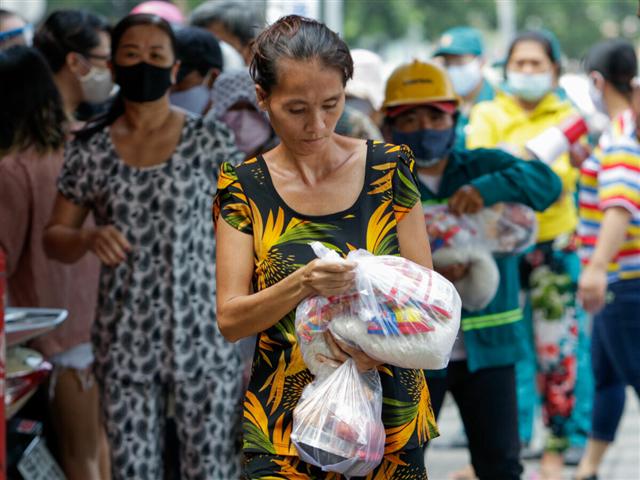
Informal workers receive donated food including instant noodles in District 1, HCMC, April 2, 2020. Photo by VnExpress/Nguyet Nhi
|
Migrants need jobs and accommodation, and HCMC needs them in return. The city needs skilled workers for its industrial parks and modern factories and unskilled workers for simpler jobs like sweeping the streets and cleaning at restaurants. Without them, not only will production stagnate but also life in the city will hardly be convenient.
Regardless of where they come from, most migrants have chosen HCMC as their second home. They have "gone south" or "moved up to Saigon" not only to find jobs but also to settle down and build their future.
The baby sleeping on the side of the road I saw is an original citizen of HCMC, for it was born in this city and its parents' livelihoods are also here. In a completely natural way, the industrialization and urbanization processes have attracted the baby's parents and tens of thousands of other workers to HCMC, and this place in turn might be where the baby will grow up.
Yet, because of current difficulties, the baby and many others’ families are having to leave this promised land in what is truly a reverse migration process.
In order to keep the migrant workforce from leaving the country's largest economic region, besides looking after their health, it is also very important to ensure their welfare.
A clearly enunciated large-scale welfare program with new timeframes might help reassure them.
Just like the nationwide vaccination campaign, I propose a nationwide welfare program for all those who lost their jobs due to the pandemic, which seems set to run until the end of 2021.
This program could include the following components: a monthly allowance enough to maintain basic living standards, food packages distributed on a weekly basis, medical care and counseling both on how to protect themselves from the pandemic and on mental health, which is an issue that has been receiving little attention in recent times.
The program will have a specific time frame: until the end of 2021. It should not be just for HCMC but the city can be the first to implement it. The reason to start with HCMC is that the pandemic situation is still complex, and even if we can contain it soon we will need time to recover the economy.
And more importantly, this program must be publicly and widely announced and implemented transparently, to ensure the public is aware, and must avoid being generic like many existing programs.
Only detailed and reliable information from the authorities could make the people feel secure. A stable public mindset will go a long way in solving the pandemic problem.
Some people might ask, "Where will the money come from?"
Such a program is certain to require resources and support from the central government as well as readiness from localities.
The latter need to clearly understand the needs of their people and undertake specific support activities, possibly using some of their own resources.
The central government meanwhile will coordinate the resources available across the country to support each locality in accordance with its needs. The VND26 trillion relief package, of which only VND7 trillion has been disbursed so far, could be integrated into this package.
I believe we can tighten our belts further by putting off public investments that have been planned but are not really necessary yet, and on meetings that are just wasteful formalities.
This is the time for a government of the people, by the people and for the people to most clearly demonstrate its qualities and capabilities in practice.


